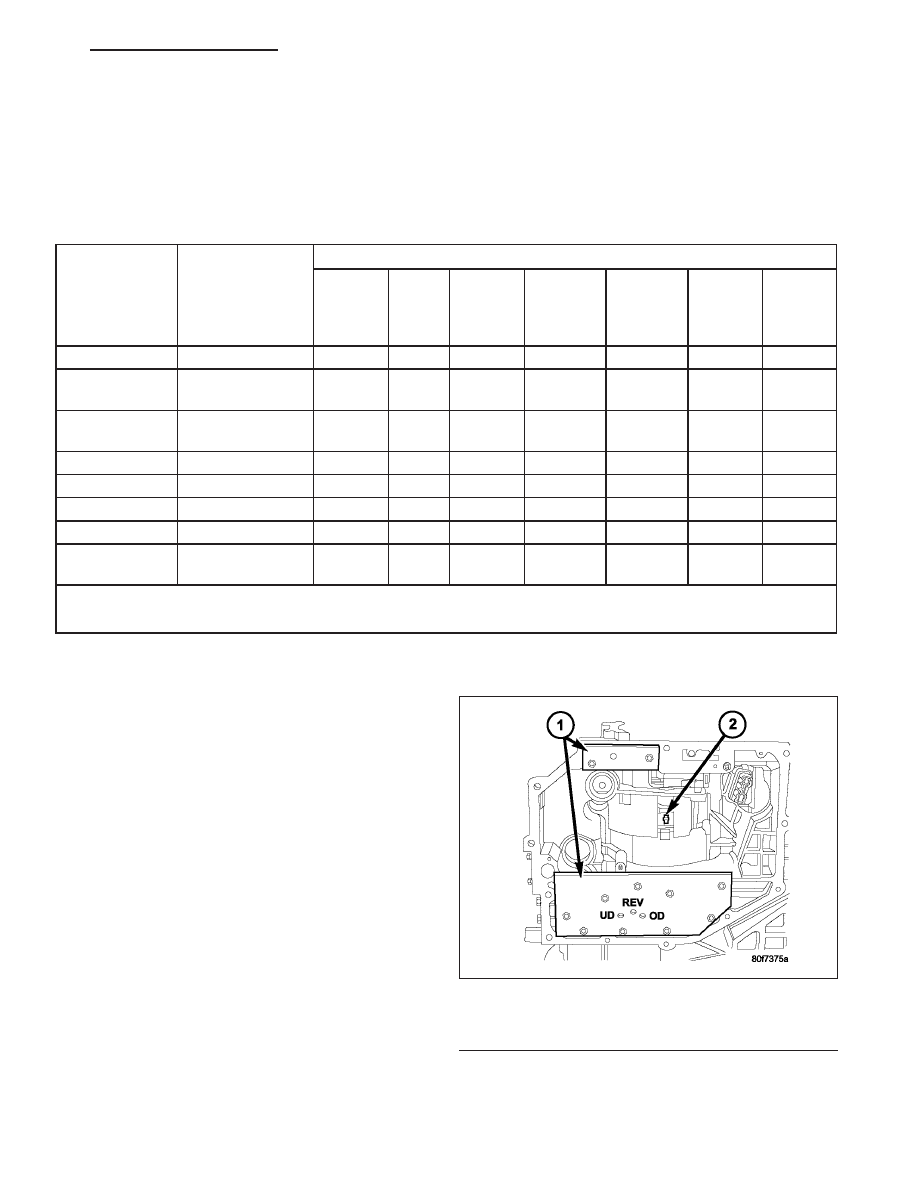Content .. 1193 1194 1195 1196 ..
Dodge Durango (HB). Manual - part 1195

3. Clutch circuit leaks are indicated if pressures do not fall within the specified pressure range.
4. If the overdrive clutch pressure is greater than 5 psi in Step 6 of Test Three, a worn reaction shaft seal ring or
a defective solenoid assembly is indicated.
5. If the underdrive clutch pressure is greater than 5 psi in Step 4 of Test Two-A, a defective solenoid/pressure
switch assembly or controller is the cause.
ALL PRESSURE SPECIFICATIONS ARE PSI (on hoist, with wheels free to turn)
Gear Selector
Position
Actual Gear
PRESSURE TAPS
Under-
drive
Clutch
Over-
drive
Clutch
Reverse
Clutch
Torque
Converter
Clutch
Off
Torque
Converter
Clutch
On
2/4
Clutch
Low/
Reverse
Clutch
PARK - 0 mph *
PARK
0-2
0-5
0-2
60-110
45-100
0-2
115-145
REVERSE - 0
mph *
REVERSE
0-2
0-7
165-235
50-100
35-85
0-2
165-235
NEUTRAL - 0
mph *
NEUTRAL
0-2
0-5
0-2
60-110
45-100
0-2
115-145
Low - 20 mph #
FIRST
110-145
0-5
0-2
60-110
45-100
0-2
115-145
Third - 30 mph #
SECOND
110-145
0-5
0-2
60-110
45-100
115-145
0-2
Third - 45 mph #
DIRECT
75-95
75-95
0-2
60-90
45-80
0-2
0-2
OD - 30 mph #
OVERDRIVE
0-2
75-95
0-2
60-90
45-80
75-95
0-2
OD - 50 mph #
OVERDRIVE
WITH TCC
0-2
75-95
0-2
0-5
60-95
75-95
0-2
* Engine Speed at 1500 rpm
# CAUTION: Both wheels must be turning at same speed.
CLUTCH AIR PRESSURE TESTS
Inoperative clutches can be located by substituting air
pressure for fluid pressure. The clutches may be
tested by applying air pressure to their respective pas-
sages after the valve body has been removed. Use
Special Tool 6599-1 (1) and 6599-2 (1) to perform test.
To make air pressure tests, proceed as follows:
NOTE: The compressed air supply must be free of
all dirt and moisture. Use a pressure of 30 psi.
1. Remove oil pan and valve body. (Refer to 21 -
TRANSMISSION/AUTOMATIC
-
42RLE/VALVE
BODY - REMOVAL)
2. Apply air pressure to the holes in the special tool
(1), one at a time.
3. Listen for the clutch to apply. It will give a slight
thud sound. If a large amount of air is heard escap-
ing, the transmission must be removed from vehi-
cle, disassembled and all seals inspected.
Air Pressure Test Plate
1 - AIR PRESSURE TEST PLATES
2 - 2/4 CLUTCH RETAINER HOLE
HB
AUTOMATIC TRANSMISSION 42RLE - SERVICE INFORMATION
21 - 185